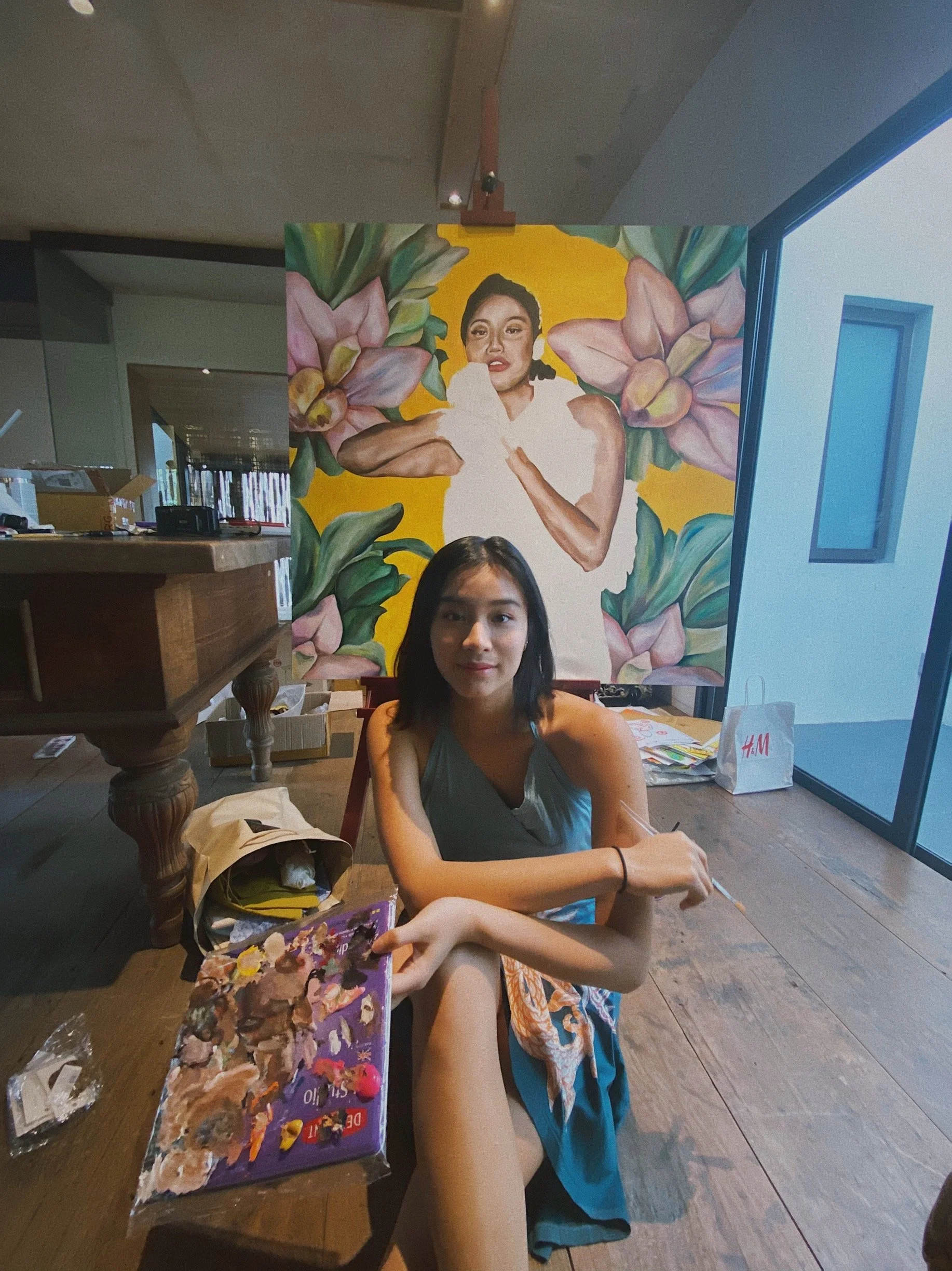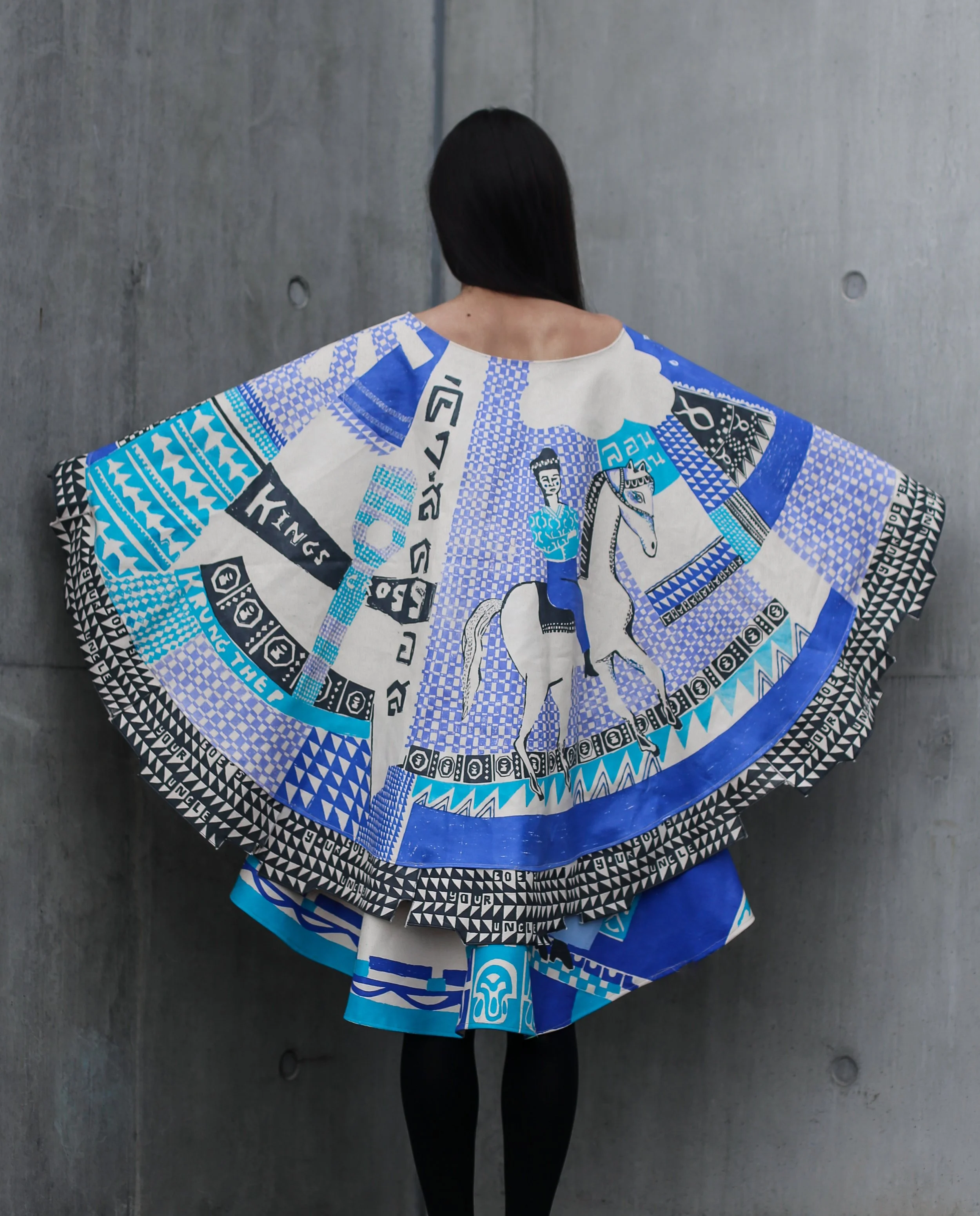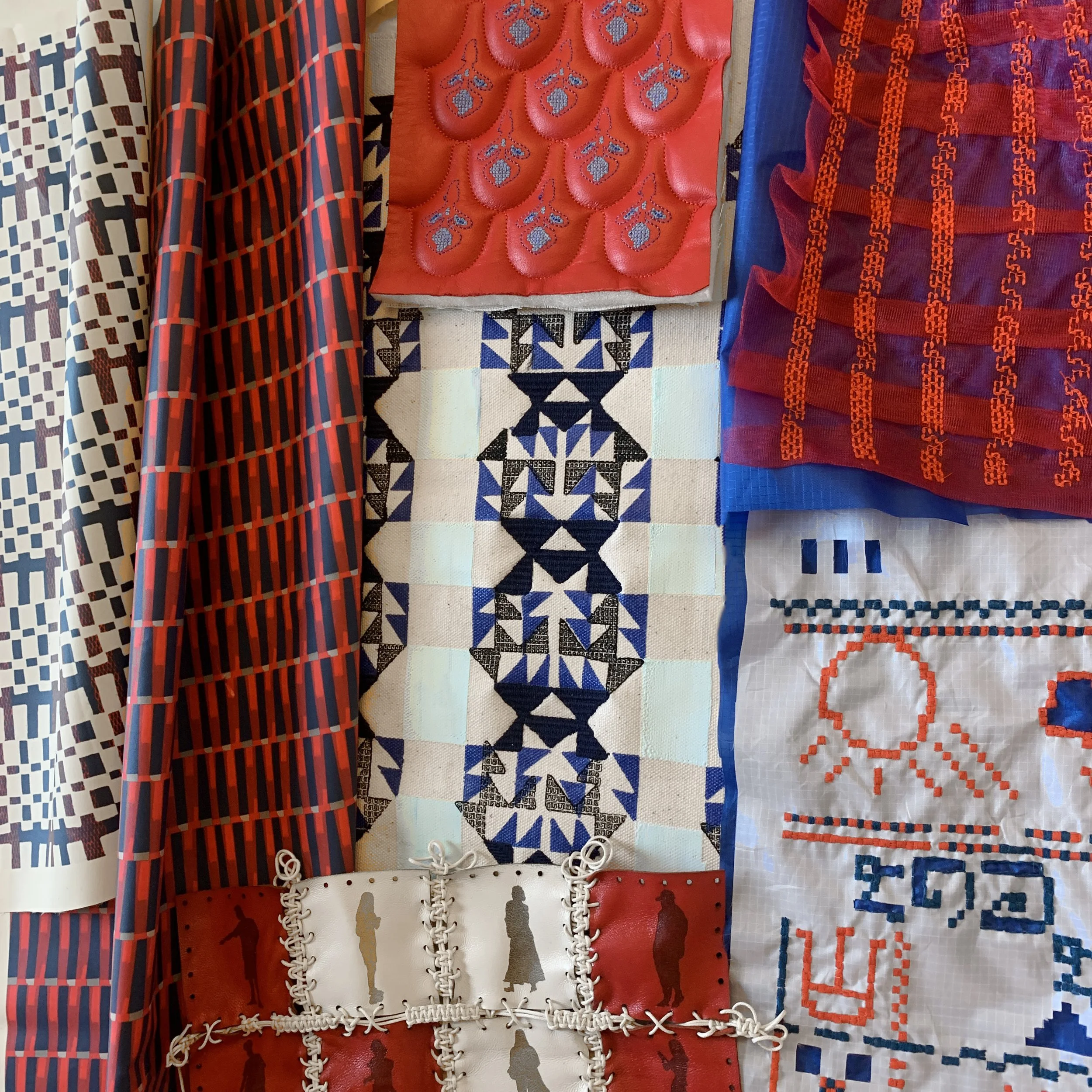Fresh Faces: Anna Termtanasak
Textile artist on capturing Thai culture through vibrant prints
F&M’s Fresh Faces is a series featuring young Southeast Asian fashion practitioners, where we speak with them about how they embarked on their careers and what propels them as creatives.
Anna Termtanasak is a Thai textile and print designer who dedicates her practice to capturing cultural aspects and beauty in mundane objects and places. After graduating from Central Saint Martins with a BA(Hons) in Textile Design in 2022, she returned to Bangkok and started her career as an emerging freelance artist. Anna’s body of works, which consists of vibrant-coloured prints illustrating abstract markings and decorative images, conveys personal narratives inspired by her Thai culture and upbringing.
Anna Termtanasak.
To start, could you talk about your background? What was your first memory or encounter with textiles?
I have seen a lot of hand-crafted textiles while growing up and living in Bangkok, especially at the Chatuchak Market which is extremely close to where I live. Since the market sells a variety of items, my mother would take me there a lot because she loved to buy and collect tribal Indian fabrics and see friends who owned stores there. She would chat with them for hours and we would spend most of our days there if I was not at school. I remembered observing all these patterns and being so fascinated by them. The shops would have colourful bags and clothes displayed in a glass wardrobe and as a curious child, I could not help but wonder how and where they were made.
What are the themes, ideas, or subjects piquing your interest at the moment? What or who are the main influences your work draws upon?
At the moment, I am drawn to drawing portraits, especially from a vicarious perspective. Kehinde Wiley is one of my favourite artists. He creates artwork in a photorealistic style and I like how he sometimes allows his background patterns to come forward, passing in front of or interacting with his subjects like physical structures. The type of artwork that makes me feel as if it is alive is something I appreciate.
Anna Termtanasak, ‘A Self Portrait’, acrylic on canvas. Image courtesy of the artist.
What drew you to focus on textile design? And how did your time at Central Saint Martins influence your approach to craft?
The funny thing is that I had no idea what the course was about at first and barely knew anything about textiles. Originally, I was interested in a BA in Performance and Design for theatre and screen. When I mentioned it in my interview for Foundation studies in Camberwell, the interviewer told me that textile design would be a better match for me since I had a lot of patterns and textures in my work. I did not listen to them until my tutor in my foundation studies suggested the exact same thing. It was then I started to research the course more, and realised it was exactly what I had been looking for.
Then, I began preparing a portfolio to be submitted to the Central Saint Martins’ textile design programme. During my time at Central Saint Martins, I developed a different mindset and working method. I think I am now a more carefree designer because everyone there truly believes that art has no boundaries. During workshops, we were encouraged to let our minds run freely without stressing ourselves out, particularly when creating. I think I rediscovered my inner child at Central Saint Martins.
“During my time at Central Saint Martins, I developed a different mindset and working method. I think I am now a more carefree designer because everyone there truly believes that art has no boundaries.”
Let’s talk about your graduation project ‘Dek Thai in London’, which referenced your own experiences as a student who experienced culture shock when you first arrived in London. How did you arrive at this theme and what would you like to communicate through this project?
It was important to me that my final project was something personal to me. One day, I took some time to reflect on my entire experience living and studying in London. By observing people around me, I realised some of the things that were unfamiliar to me when I first arrived but have grown accustomed, such as people rushing around with their cups of coffee or walking around in the rain without an umbrella. These were the things I knew I would miss dearly when I left the city. Considering that no one wears anything to protect themselves from the rain, I decided to develop a waterproof, sustainable poncho to represent sarcastic, British humour.
Anna’s graduation project, ‘Dek Thai in London’. Image courtesy of Anna Termtanasak.
Could you share more of the creative and technical process of creating the project? Were there any challenges that you faced during the process?
Initially, I brainstormed all the culture shocks I experienced when I first arrived and then asked my Thai friends if they had similar experiences. As part of my research, I examined and compared the shapes of the Tube in London with traditional Thai fabrics. In these patterns, there are strong uses of geometric elements and tiling components, which later became a focal point of my final collection. Most of the designs were also inspired by old ceramics I saw at the British Museum and works of traditional woven garments made by tribes in Chiang Mai, Northern Thailand. In response to these layouts, I decided to combine these aspects in my drawing style with a play on Thai and English texts to create a fusion of both cultures.
Visual research and process of ‘Dek Thai in London’ collection. Image courtesy of Anna Termtanasak.
Afterward, I began photographing the city and creating various drawings in various styles to document my research. I reviewed a few artists' works for inspiration and discussed these ideas with my tutors before deciding on my project's objective. It was my goal to create a waterproof poncho made from cotton and screen-printed with a limited number of colours in order to reduce waste. This was something that was out of character for me because I had always worked with a lot of colours.
Behind the scenes process of the ‘Dek Thai in London’ collection. Image courtesy of Anna Termtanasak.
At this point, there was a great deal of uncertainty because I was concerned that the outcome would not be as I expected. I found it challenging to push forward and challenge myself in such a way, especially since I wanted my final project to be the best one yet. In the meantime, I was trying to figure out ways to coat the screen-printed cotton sustainably with wax while keeping the print quality the same. My final pieces began almost immediately after I found a solution to this. I exposed two large screens and screen-printed sections of my artwork starting from pastel blue and gradually progressing to black. With this method, I saved a lot of time during the process.
‘Dek Thai in London’ collection. Image courtesy of Anna Termtanasak.
In an interview with Texintel, you mentioned that textile is a medium to express your Thai culture and identity. How does this translate to your designs and influence your artistic practice?
Most of my projects contain some sort of Thai influence, usually through the use of imagery, mark-making, or the layout of the pattern itself. These, in combination with my strong use of bold colours, shape my identity and the way I generally work. An example of this is my ‘Collections’ project, in which I was inspired by the colours of Yaowarat, Bangkok's Chinatown area, and by my mother's miniature handicraft dolls that ultimately became the motifs in this collection. Additionally, I generally use language in my works, so if you look closely you will see some Thai words or letters. I think the alphabets are so beautiful that they almost resemble drawings.
“Most of my projects contain some sort of Thai influence, usually through the use of imagery, mark-making, or the layout of the pattern itself. These, in combination with my strong use of bold colours, shape my identity and the way I generally work.”
Textiles and visuals of the ‘Collections’ project. Image courtesy of Anna Termtanasak.
I have noticed that you often use bold and saturated colours in your work. Is there a reason for working with this particular palette?
I find it so enjoyable to use colours. In many cases, I feel people are afraid to use or wear them, but to me, I feel that it gives the work a lot more energy when you see bursts of different colours. When I was a child and painted constantly, my mother always encouraged me to use all the colours on my palette, and this is something that has stuck with me.
Textiles and visuals of the ‘Collections’ project. Image courtesy of Anna Termtanasak.
As a specialist in textile design, I understand that you have worked with various materials and techniques. Could you share with us your favourite project and/or exploration that you have done so far? Are there any materials or textile innovations that you have successfully created?
My favourite project would have to be ‘Dek Thai in London’ because of the range of emotions that I experienced and my sense of accomplishment after seeing the outcome. I struggled with the technical aspect for the first few weeks after returning to the studio after nearly a year of studying online due to the pandemic. It was the longest project I had ever worked on, so I had the opportunity to explore other techniques such as laser cutting and embroidery. I was delighted to discover a method for coating my screen-printed cotton with natural beeswax as well.
Textile exploration and experimentation of ‘Dek Thai in London’ collection. Image courtesy of Anna Termtanasak.
Textile exploration and experimentation of ‘Dek Thai in London’ collection. Image courtesy of Anna Termtanasak.
As a young emerging Southeast Asian textile designer in Thailand, what are some of the key challenges you face, and equally opportunities that you seek?
Thailand has a long tradition of silk and cotton, but I feel that Thai people don’t appreciate the uniqueness of Thai fabric and handcrafted textiles as much as they should. Since fabrics are generally mass-produced and made under the control of larger companies, there are few opportunities for emerging artists to pursue a career in textile design. I have found it quite challenging to establish myself as a textile designer. I am eager to bring awareness to Thai textiles and culture so that more people can appreciate them.
Illustrated prints and printed scarf from the ‘Biomimicry’ collection. Image courtesy of Anna Termtanasak.
Finally, what plans do you have in store for your practice moving forward?
Honestly, I am just going with the flow right now to see where the different opportunities lead me. Being a freelance artist, I am eager to learn and work with a variety of people in the creative field so that I can become a more well-rounded designer. As someone who loves to learn new things, I hope that by maintaining this mindset and motivation, I will be able to start something of my own that will be very meaningful to me.
See more of Anna's works on her Instagram at @annaeyes.art.











